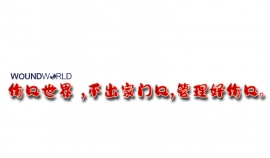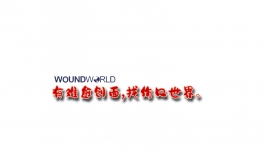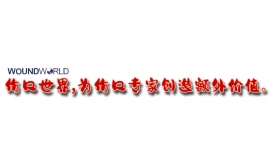文献精选
王平义1*,孙若豪1*,张群辉2 ,赵万花1 ,李文华1#
1 西藏民族大学医学院,陕西 咸阳
2 青海大学医学院高原医学研究中心,青海 西宁
收稿日期:2022年7月11日;录用日期:2022年8月9日;发布日期:2022年8月16日
摘 要
背景:慢性病的发病率高、危险性大,是全球性公共健康首要问题。糖尿病宛如“慢性癌症”,是由饮食、环境、药物、遗传等因素导致的,体内胰岛素分泌相对或者绝对不足而出现的血糖代谢紊乱。常见以II型糖尿病为主,并发症可导致患者心肌梗塞、脑溢血、失明、肾功能衰竭和下肢截肢等严重后果,是影响人类健康和寿命的主要危险因素。目的:总结II型糖尿病大血管病变发病生物标志物的研究进展,以期为II型糖尿病大血管病变及其所引起的心脑血管疾病的防治提供新靶点。方法:以“macrovasculardisease in type 2 diabetes mellitus,pathogenesis”为英文检索词,以“II型糖尿病并发大血管病变,发病机制”为中文检索词,应用计算机检索PubMed、Medline、中国知网和万方数据库发表的相关文献,最终纳入文献59篇进行归纳分析。结果与结论:II型糖尿病大血管病变是由多种因素共同作用导致的复杂疾病。近年来,大量实验室和临床研究表明,其发生发展主要与非编码RNA、外泌体、炎性小体、活化T细胞核因子、骨形态发生蛋白等生物标志物有关,上述生物标志物有望成为II型糖尿病大血管病变新靶点。
关键词
糖尿病,血管病变,生物标志物,新靶点
文章引用: 王平义, 孙若豪, 张群辉, 赵万花, 李文华. II 型糖尿病大血管病变防治新靶点的研究进展[J]. 临床医学进展, 2022, 12(8): 7496-7504. DOI: 10.12677/acm.2022.1281082
Research Progress of New Targets for Prevention and Treatment of Type II Diabetic Macrovascular Disease
Pingyi Wang1*, Ruohao Sun1*, Qunhui Zhang2, Wanhua Zhao1, Wenhua Li1#
1 School of Medicine, Xizang Minzu University, Xianyang Shaanxi
2 Research Center for High Altitude Medicine, Medical College of Qinghai University, Xining Qinghai
Received: Jul. 11th, 2022; accepted: Aug. 9th, 2022; published: Aug. 16th, 2022
Abstract
Background: Chronic diseases are a major global public health problem due to their high incidence and high risk. Diabetes, like “chronic cancer”, is caused by diet, environment, drugs, genetics and other factors, and the relative or absolute insufficiency of insulin secretion in the body leads to the disorder of blood glucose metabolism. Type II diabetes is the most common type. Its complications can lead to myocardial infarction, cerebral hemorrhage, blindness, renal failure and lower limb amputation and other serious consequences. It is a major risk factor affecting human health and life span. Objective: In order to provide new targets for the prevention and treatment of type II diabetic macroangiopaemia and its cardiovascular and cerebrovascular diseases, the research progress of type II diabetic macroangiopaemia biomarkers was summarized. Methods: Using the search terms of “macrovascular disease in type II diabetes mellitus, pathogenesis” in Chinese and English. Relevant literatures published by PubMed, Medline, CNKI and Wanfang database were searched by computer, and 59 literatures were finally included for induction and analysis. Results and Conclusion: Type II diabetic macrovascular disease is a complex disease caused by many factors. In recent years, a large number of laboratory and clinical studies have shown that its occurrence and development are mainly related to non-coding RNA, exosome, inflammasome, activated T nuclear factor, bone morphogenetic protein and other biomarkers, which are expected to become new targets of type II diabetic macrovascular disease.
Keywords: Diabetes, Vascular Disease, Biomarker, New Target
Copyright © 2022 by author(s) and Hans Publishers Inc.
This work is licensed under the Creative Commons Attribution International License (CC BY 4.0).
http://creativecommons.org/licenses/by/4.0/
张晓艺1,2,谷茜茜3,江 雪1,薛雅卓1*
1 山东第一医科大学(山东省医学科学院)护理学院,山东 泰安
2 山东第一医科大学第一附属医院(山东省千佛山医院),山东 济南
3 济南市中心医院,山东 济南
收稿日期:2022年4月22日;录用日期:2022年6月10日;发布日期:2022年6月21日
摘 要
糖尿病是一组因遗传和环境因素共同作用导致的代谢性疾病,是目前全世界最常见的慢性疾病之一,严重威胁着人们的健康。氢医学处于蓬勃发展阶段,氢具有抗炎、抗氧化、抗凋亡以及调节信号通路的作用,近年来已被证实在预防和治疗包括糖尿病在内的多种疾病中发挥着作用。本文主要就氢医学的发展、氢分子的作用及其在糖尿病方面的基础研究和临床研究四个方面进行概述,以期为寻找更为有效的糖尿病辅助治疗方法提供新思路。
关键词
氢医学,糖尿病,综述
文章引用: 张晓艺, 谷茜茜, 江雪, 薛雅卓. 氢干预糖尿病的研究进展[J]. 护理学, 2022, 11(3): 347-353.
DOI: 10.12677/ns.2022.113058
Advances in Hydrogen Medicine Intervention in Diabetes Mellitus Xiaoyi Zhang1,2, Qianqian Gu3, Xue Jiang1, Yazhuo Xue1*
1 School of Nursing, Shandong First Medical University (Shandong Academy of Medical Science), Taian Shandong
2 The First Affiliated Hospital of Shandong First Medical University (Shandong Qianfo Mountain Hospital), Jinan
Shandong
3 Jinan Central Hospital, Jinan Shandong
Received: Apr. 22nd, 2022; accepted: Jun. 10th, 2022; published: Jun. 21st, 2022
Abstract
Diabetes is a group of metabolic diseases caused by the joint action of heredity and environment.
It is one of the most common chronic diseases in the world, and it is a serious threat to people’s health. Hydrogen medicine is in a vigorous development stage. Hydrogen has the effects of antiinflammatory, anti-oxidation, anti apoptosis and regulating signal pathways. In recent years, hydrogen has been proved to play a role in the prevention and treatment of many diseases including diabetes. At present, hydrogen medicine is in a vigorous development stage. This article mainly summarizes four aspects of the development of hydrogen medicine, the role of hydrogen molecules and their basic research and clinical research in diabetes, so as to provide new ideas for further research on hydrogen in the prevention and treatment of diabetes.
Keywords : Hydrogen Medicine, Diabetes, Review
Copyright © 2022 by author(s) and Hans Publishers Inc.
This work is licensed under the Creative Commons Attribution International License (CC BY 4.0).
http://creativecommons.org/licenses/by/4.0/
赵 鹏1 ,张春香2
1 内蒙古民族大学,内蒙古 通辽
2 内蒙古林业总医院,内蒙古 牙克石
收稿日期:2022年4月27日;录用日期:2022年5月21日;发布日期:2022年5月31日
摘 要
糖尿病(DM, diabetes mellitus)和骨质疏松症(OP, osteoporosis)是两种有差异的疾病,有不同的并发症。长期慢性高血糖的刺激引起、脂质沉积、血供差、葡萄糖毒性以及氧化应激的联合作用可导致骨质疏松的发生;除了糖尿病患者可以发生骨质疏松,其他导致或缓解糖尿病的药物也可以引起骨质疏松;例如:皮质醇激素,免疫抑制剂,利尿剂,降钙素等药物有着相似的致病途径。目的:从发病机制和药物相互作用研究糖尿病与骨质疏松相关性。
关键词:糖尿病,相关性,骨质疏松,机制,药物
Research Progress on Correlation between Diabetes Mellitus and Osteoporosis Peng Zhao1, Chunxiang Zhang2
1 Inner Mongolia Minzu University, Tongliao Inner Mongolia
2 Inner Mongolia Forestry General Hospital, Yakeshi Inner Mongolia
Received: Apr. 27th, 2022; accepted: May 21st, 2022; published: May 31st, 2022
Abstract
Diabetes mellitus (DM) and osteoporosis (OP) are two different diseases with different complications. The combined effects of chronic hyperglycemia, lipid deposition, poor blood supply, glucose toxicity and oxidative stress can lead to osteoporosis. In addition to diabetes patients, other drugs that cause or relieve diabetes can also cause osteoporosis; Drugs such as cortisol, immunosuppressants, diuretics, and calcitonin have similar pathways. Objective: To study the relationship between diabetes mellitus and osteoporosis from the perspective of pathogenesis and drug interaction.
文章引用: 赵鹏, 张春香. 糖尿病与骨质疏松相关性研究进展[J]. 临床医学进展, 2022, 12(5): 4858-4863.
DOI: 10.12677/acm.2022.125704
Keywords: Diabetes Mellitus, Correlation, Osteoporosis, Mechanism, Drug
Copyright © 2022 by author(s) and Hans Publishers Inc.
This work is licensed under the Creative Commons Attribution International License (CC BY 4.0).
http://creativecommons.org/licenses/by/4.0/
许茹娜1 ,李思瓯2*
1 牡丹江医学院,黑龙江 牡丹江
2 牡丹江医学院附属红旗医院,黑龙江 牡丹江
收稿日期:2022年5月17日;录用日期:2022年6月7日;发布日期:2022年6月21日
摘 要
2型糖尿病(Type 2 diabetes mellitus, T2DM)发病机制主要是胰岛素分泌缺陷即绝对缺乏和胰岛素抵抗即利用障碍,其发病的关键因素是超重与肥胖所致的胰岛素抵抗。肥胖症(obesity)是指机体脂肪总含量过多和(或)局部含量增多及分布异常,是一种由遗传和环境等因素共同引起、并对健康造成一定影响的慢性代谢性疾病。胰岛素抵抗(Insulin resistance, IR)是指胰岛素作用的目标器官如肝脏、脂肪组织和骨骼肌对于正常的胰岛素水平敏感性下降,使组织对葡萄糖的摄取和利用效率减低。肥胖在研究T2DM的发生发展中逐渐成为不可或缺的角色。此文旨在总结肥胖在2型糖尿病发病机制中所扮演的角色并总结新的治疗方法及代谢指标。
关键词:肥胖,2型糖尿病,胰岛素抵抗,发病机制,代谢指标
Exploration on Obesity in the Pathogenesis of Type 2 Diabetes Mellitus
Runa Xu1, Si’ou Li2*
1 Mudanjiang Medical University, Mudanjiang Heilongjiang
2 Hongqi Hospital Affiliated to Mudanjiang Medical University, Mudanjiang Heilongjiang
Abstract
The pathogenesis of type 2 diabetes mellitus (T2DM) is mainly insulin secretion deficiency (absolute deficiency) and insulin resistance (utilization disorder). The key factor of its pathogenesis is insulin resistance caused by overweight and obesity. Obesity is a chronic metabolic disease caused by genetic and environmental factors, which has a certain impact on health. Insulin resistance refers to the decrease in the sensitivity of target organs of insulin action, such as liver, adipose tissue and skeletal muscle, to normal insulin levels, resulting in the decrease of glucose uptake and utilization efficiency of tissues. Obesity has gradually become an indispensable role in the study of the occurrence and development of T2DM. The purpose of this article is to summarize the role of obesity in the pathogenesis of type 2 diabetes and to summarize new treatment methods and metabolic indicators.
Keywords
Obesity, Type 2 Diabetes Mellitus, Insulin Resistance, Pathogenesis, Metabolic Index
Copyright © 2022 by author(s) and Hans Publishers Inc.
This work is licensed under the Creative Commons Attribution International License (CC BY 4.0).
http://creativecommons.org/licenses/by/4.0/
1. 引言
一项 2014 年最新数据表明,在全世界范围内,超重人口约 19 亿余,其中肥胖人口约占 6 亿以上[1]。 随着人们生活水平的提高和人口老龄化的日益严峻,肥胖与 T2DM 成为常见的内分泌代谢疾病,二者的患病率呈现出全球性的增长趋势。肥胖与 T2DM 的发生发展密切相关,体重增加隶属 T2DM 的危险因素之一。而在 T2DM 发生发展里扮演重要角色的胰岛素抵抗(Insulin resistance, IR)中,肥胖也贡献了它独有的“力量”。此篇文章以肥胖为论述要点探讨其在 T2DM 发病机制中的进展。
2. 肥胖与 T2DM 的关系
2.1. 肥胖是发生 T2DM 的危险因素
BMI (Body Mass Index)指数,是国际上常用的衡量人体胖瘦程度以及是否健康的一个标准,计算公式为:BMI = 体重 ÷ 身高 2 (kg/m²)。BMI 正常值在 20 至 25 之间,超过 25 为超重,30 以上则属肥胖[2]。 T2DM 发生的重要危险因素之一是肥胖,在我国糖尿病患者中,腹型肥胖患者比例接近 50%,有研究表明,减重约 10 kg 可使糖尿病患者的死亡率降低约 25% [3]。过去的 30 年里,我国成人 BMI 平均增加约1.8 kg/m2 ,肥胖患病率会增加 8 倍,糖尿病患病率则增加 14 倍[4]。糖尿病合并超重或肥胖患者,内脏脂肪体积比单纯超重或肥胖患者更高[5]。从这些研究中可以发现,患者 BMI 增加与患 T2DM 的风险性增加有极大关联,但肥胖和 T2DM 之间的复杂关系至今仍未完全阐明清楚,两者发生、发展及相互促进的关系有待进一步发现[6]。
2.2. 肥胖与 IR 的关系
肥胖时机体脂肪总含量过多、局部脂肪含量增多及分布异常,在生物化学层面[7],胰岛素具有抑制脂肪组织分解效应的作用,因此当发生 IR 时,脂解效应失去抑制而变得活跃,血液中的游离脂肪酸(FFA)升高,引起细胞内乙酰 CoA 生成增多,乙酰 CoA 可以变构性地抑制丙酮酸脱氢酶活性,导致三羧酸循环减慢从而降低葡萄糖的氧化反应;异常堆积的乙酰 CoA 也可使 ATP 和 NADH 的生成增多,并且激活丙酮酸羧化酶,促使糖异生反应变得活跃,输出更多的肝糖原,进一步加重 IR。更重要的是,在长期高浓度 FFA 的脂毒性作用下,胰岛 β 细胞结构逐渐被破坏而致胰岛素分泌减少,下一步便会发展为糖调节受损甚至糖尿病[8] [9]。
2.3. 肥胖及 T2DM 的共同基础是 IR
肥胖中尤以中心性肥胖为主是 IR 的最主要原因,它造成胰岛 β 细胞超载运作,进而损害胰岛功能,进而进展为 T2DM。IR 的特征是 β 细胞的结构破坏和功能丧失,最终导致 β 细胞的丢失,在病理生理水平上,IR 是肥胖与 T2DM 的核心机制,是肥胖与 T2DM 共同的基础,是进展为 T2DM 的主要部分。所以减轻体重是进一步缓解 IR、治疗肥胖 T2DM 患者的关键步骤。在探讨肥胖与 IR 的关系时发现,T2DM合并肥胖患者存在明显的 IR 和骨密度下降的情况,导致或加重 T2DM 患者 IR 和骨质疏松的主要因素可能是腹内脂肪堆积,通过监测 T2DM 患者腹内脂肪分布情况来预估 IR 和骨质疏松的发生风险,在临床工作中可推荐应用[10]。机体内活性氧化物的产生大于清除而出现氧化还原反应失衡的一种病理状态为氧化应激反应。线粒体会产生大量活性氧(ROS)在当机体血糖增高时,进而破坏了线粒体功能,引起氧化应激反应,这也是 T2DM 发生的重要因素之一[11]。代谢异常型肥胖患者的 IR,可由氧化应激和炎症反应而诱导,即氧化应激能够通过活化苏氨酸激酶,阻断胰岛素作用信号通路,降低外周组织对胰岛素的敏感性从而导致 IR 的发生[12]。所以有研究表明,通过逆转大量活性氧、纠正氧化还原水平的平衡失调或许能够改善 IR 状态[13]。
3. 各项有关肥胖的代谢指标变化
3.1. 内脏脂肪含量相关指标
超重或肥胖的 T2DM 患者存在不同程度的血脂代谢紊乱和血压升高,以伴有内脏脂肪面积增多者最为明显[14]。也有研究显示,T2DM 合并肥胖患者的内脏脂肪含量也与尿酸、同型半胱氨酸、血脂指标、腹围明显相关,此项对照研究发现腹部总脂肪体积、内脏脂肪体积与 IR 水平呈正相关,而皮下脂肪体积与 IR 则无相关性[15],可推测内脏脂肪体积与 IR 存在极大关联。在腹部总脂肪体积无明显差异的情况下,T2DM 合并肥胖患者皮下脂肪的体积明显低于未合并肥胖的 T2DM 患者,内脏脂肪体积明显高于未合并肥胖的 T2DM 患者,提示内脏脂肪体积增加会加重 IR 水平,使血中胰岛素、尿酸、总胆固醇、甘油三酯、低密度脂蛋白、同型半胱氨酸水平升高,加重 T2DM 病情进展。
3.2. Ghrelin
Ghrelin 是一种由胃底细胞分泌的小分子活性肽,又称“饥饿素”,是生长激素促泌物受体的内源性配体,与多种外周信号共同参与调节机体的糖脂代谢,具有促进生长激素分泌、促进摄食、参与能量代谢等多种作用,与食欲和饥饿程度呈正相关关系,即分泌的越多,食欲越高,饥饿感越强。T2DM 发生发展的重要病理生理基础是 IR,而肥胖是 IR 和 T2DM 的共同危险因素。针对 Ghrelin 深入研究其与肥胖和 T2DM 之间密切而复杂的关系,有助于为肥胖和 T2DM 的诊断和治疗寻找新的突破点[16]。
3.3. 几丁质酶-3 样蛋白-1 (YKL-40)
根据一项回顾性研究发现,一种能反应动脉粥样硬化及血管生成水平的炎症因子,几丁质酶-3 样蛋白-1 (chitinase 3 like protein-1, YKL-40),对 T2DM 患者的大血管病变(冠心病等心血管疾病)有一定的诊断价值,可以猜测 YKL-40 与 T2DM 有一定的相关性[17]。然而结论处也提出问题,目前肥胖和非肥胖糖尿病患者血清 YKL-40 水平是否存在差异,T2DM 患者血清 YKL-40 水平与 IR 的关系也尚未清楚,相关的临床研究较少。
3.4. 颗粒蛋白前体(PGRN)、脂联素(ADP)
一项对照性实验表明,中青年 T2DM 患者血清 PGRN 水平明显升高,ADP 水平降低,并且实验证明二者与中青年患者 IR 存在密切联系,PGRN/ADP 在 IR 的发生和发展中起重要作用。实验结论推测,PGRN、ADP,尤其是 PGRN/ADP 有极大可能成为进一步研究中青年 T2DM 发病机制及其诊断标准的有价值的指标[18]。
3.5. 炎性指标
一篇发表在《现代中西医结合杂志》上的文章[19],作者通过比较 180 例初诊 T2DM 合并肥胖患者的观察组及同期新发诊断的正常 BMI 的 T2DM 患者 180 例作的对照组,观察 2 组患者血清 CRP、IL-6、IL-8 水平、相关生化代谢指标与胰岛素抵抗指数(HOMA-IR)水平的差异,结果显示观察组血清 CRP、IL-6、IL-8 水平和空腹血糖(FPG)、空腹胰岛素(FINS)、糖化血红蛋白(HbA1c)、低密度脂蛋白胆固醇(LDLC),以及 HOMA-IR 水平明显高于对照组。作者用实验证明,T2DM 患者合并肥胖发生时,血清 CRP、IL-6、IL-8 水平可进一步升高,升高的血清 CRP、IL-6、IL-8 水平与 IR 程度存在相关性,由此可提示炎性反应可能参与 T2DM 肥胖患者的 IR 的进展。
4. 在治疗中的探索
4.1. 外科治疗应运而生
生活方式及行为干预是肥胖症的一线治疗方案,若患者合并有高血糖、高血压、血脂异常等与肥胖有关的并发症时,BMI 经过 3 个月的生活方式干预仍高于 28.0 kg/m2 且减重低于 5%,或者 BMI 仍高于24.0 kg/m2 时,在生活方式及行为干预基础上推荐应用药物治疗[20]。但当 BMI ≥ 37.5 kg/m2 的肥胖症患者,在生活方式干预和药物治疗仍不能有效控制体重时,指南建议积极外科手术治疗:当BMI在32.5 kg/m2至 37.5 kg/m2 之间时,手术治疗或可推荐;当 BMI 在 27.5 kg/m2 至 32.5 kg/m2 之间且至少有 2 项代谢综合征组分表现或存在肥胖合并并发症时,综合评估后也可考虑外科手术治疗[21]。
4.2. 生活方式干预主要包括饮食控制和运动干预
在中国的一些研究报告中也有新的发现[22],急剧增加的 IR 与肥胖有绝对关系。一线治疗方案也明确指出,减少能量摄入或改善膳食结构是减重治疗的重要策略,也是药物和外科治疗肥胖症的基石。“轻断食疗法”可用于肥胖症患者短期减重,既降低机体能量调节反应,又可防止节食引起的基础代谢率降低。一项对照性研究表示,瑜伽运动在治疗和预防 T2DM 的过程中优于体育性质的锻炼,与不运动的肥胖型 T2DM 患者相比,运动的肥胖型 T2DM 患者的体重下降更明显、胰岛素敏感性提高更多,因此,减轻体重能有效改善 IR 的水平,定期有氧运动结合适量抗阻训练的组合拳是首选的较好的治疗方式[23],加强患者的运动意识及频率,这说明患者的自我管理在治疗过程中起到了至关重要的作用。
4.3. 胰岛素泵的应用
在糖尿病患者的治疗过程中,短期胰岛素强化治疗也是重要组成部分,尤以胰岛素泵的应用最为广泛。一项回顾性研究表明[24],有效降低血糖,使机体及时缓解高血糖的毒副作用,促进受损胰岛 β 细胞功能的恢复,延缓患者病情的进展,胰岛素泵在糖尿病患者的治疗过程中越来越受到肯定。一方面,与使用胰岛素泵相比,多次皮下胰岛素注射治疗极易出现漏注、注射过量或少量注射等情况,胰岛素泵的应用能最大限度地减少人为因素引起的用药失误,对提高患者的治疗效果具有重要意义。另一方面,胰岛素泵的应用对改善患者预后具有显著作用,可有效改善初诊肥胖 T2DM 患者的糖、脂代谢情况,缓解IR,及时降低和控制体内血糖、脂水平,降低氧化应激反应。
4.4. 利拉鲁肽在肥胖型 T2DM 患者治疗中的应用
在治疗 T2DM 的过程中,GLP-1 受体激动剂问世,此药可以明显改善 IR,减少 β 细胞的凋亡,促进β 细胞的再生,减少肝糖原的输出,尤其对于超重或肥胖的 T2DM 患者,有明显减重的作用。GLP-1 受体激动剂的代表药物,利拉鲁肽在降糖的同时可以降低患者 BMI 并改善患者的 IR 情况,且用药效果与BMI 的增加呈正性相关趋势[25]。利拉鲁能够显著降低老年 T2DM 合并肥胖患者的体重、BMI、腰围、血糖、HbA1c 和 TG、TC、LDL-C 水平,升高血清 C 肽水平,最值得一提的是,此药避免了增加体质量和发生低血糖等药物不良反应的风险,而目前已知的降糖药物主要包括各种外源性胰岛素及传统的口服降糖药物,大多有此风险[26] [27]。
5. 小结与展望
肥胖是 T2DM 发生发展的重要组成部分,肥胖相关的 T2DM 的发病机制与 IR 息息相关,而 IR 的发生又与肥胖环环相扣。目前虽然在探索 T2DM 的发病机制过程中,有关于肥胖、IR 及各项代谢指标的研究取得了一些进展,但仍尚未完全阐明某些关键性问题。肥胖症及糖尿病成为流行性疾病,减重代谢外科逐渐走向舞台,如何更好地实现肥胖与代谢病与外科手术相结合的精准治疗方法可能会是今后的一大研究热点。此外,进一步深入探讨肥胖相关指标在 T2DM 发病机制中的作用,不仅有助于明确 T2DM 的病因,也可能为糖尿病的预防和治疗提供新思路。
参考文献
[1] 赛米·赛麦提, 买买提·依斯热依力, 艾克拜尔·艾力. 肥胖与2型糖尿病关系的研究进展[J]. 中华肥胖与代谢病电子杂志, 2020, 6(2): 130-134.
[2] 李红娟, 杨柳, 张楠. 身体质量指数作为肥胖筛查标准的判别准确性评价[J]. 中国预防医学杂志, 2014, 15(6): 571-575.
[3] Jourdan, T., Godlewski, G. and Kunos, G. (2016) Endocannabinoid Regulation of β-Cell Functions: Implications for Glycaemic Control and Diabetes. Diabetes, Obesity & Metabolism, 18, 549-557. https://doi.org/10.1111/dom.12646
[4] 陈颖, 夏明锋, 李小英. 体脂分布与糖尿病风险[J]. 中国糖尿病杂志, 2017, 9(4): 218-220.
[5] 乔春燕. 腹部脂肪在超重/肥胖患者中的分布及与胰岛素抵抗的相关性研究[J]. 山西医药杂志, 2021, 50(1): 113-115.
[6] Wang, Y., Bolge, S.C., Lopez, J.M., et al. (2016) Changes in Body Weight among People with Type 2 Diabetes Mellitus in the United States, NHANES 2005-2012. The Diabetes Educator, 42, 336-345.
https://doi.org/10.1177/0145721716640096
[7] 乐小婧, 陈婕, 张帆, 李会芳. 代谢综合征与 2 型糖尿病的相关研究进展[J]. 昆明医科大学学报, 2020, 41(5):145-149.
[8] 王晓惠, 经小梅, 张俊芳, 等. 肥胖与糖尿病、高血压病的相关性分析[J]. 河北医药, 2008, 30(4): 504-505.
[9] Zhang, S.Y., Wu, J.H., Zhou, J.W., et al. (2016) Overweight, Resting Heart Rate, and Prediabetes/Diabetes: A Population-Based Prospective Cohort Study among Inner Mongolians in China. Scientific Reports, 6, Article No. 23939. https://doi.org/10.1038/srep23939
[10] 李健, 曹彩霞, 刘克岩, 刘新峰, 蒋钢. 腹部脂肪分布与 2 型糖尿病合并肥胖患者胰岛素抵抗和骨密度的关系研究[J]. 现代生物医学进展, 2020, 20(8): 1523-1527.
[11] 李珅, 牛敏, 高政南. 肥胖人群中代谢状态与胰岛素抵抗的关系[J]. 药品评价, 2018, 15(3): 19-20, 48.
[12] Himsworth, H.P. (1936) Diabetes Mellitus: Its Differentation into Insulin-Sensitive and Insulin Insensitive Type. The Lancet, 18, 127-130.
[13] Evans, J.L., Goldfine, I.D., Maddux, B.A., et al. (2003) Are Oxidative Stress Activated Signaling Pathways Mediators of Insulin Resistance and β-Cell Dysfunction? Diabetes, 52, 1-8. https://doi.org/10.2337/diabetes.52.1.1
[14] 莫帅帅. 超重/肥胖 2 型糖尿病患者腹部脂肪分布与胰岛素抵抗的相关性[D]: [硕士学位论文]. 长春: 吉林大学,2019.
[15] 陈书音, 杜润雨. 2 型糖尿病合并肥胖患者腹部脂肪对胰岛素抵抗及相关代谢指标的影响[J]. 中国卫生工程学, 2019, 18(4): 623-625.
[16] 孙英冬, 马凯. Ghrelin 与肥胖、胰岛素抵抗和 2 型糖尿病的研究进展[J]. 中国糖尿病杂志, 2017, 25(7): 666-669.
[17] 殷安康, 王逸, 赵翔宇, 梁兰玉, 刘涵. 肥胖与非肥胖 2 型糖尿病患者血清 YKL-40 水平差异及与胰岛素抵抗的相关性研究[J]. 中华保健医学杂志, 2019, 21(4): 309-312.
[18] 胡森安, 汪剑晖, 艾红红, 宋海涛, 李丹. 中青年 2 型糖尿病患者颗粒蛋白前体、脂联素水平及其比值与胰岛素抵抗的相关性分析[J]. 检验医学与临床, 2021(18): 71-74.
[19] 张红岩, 刘赞朝, 何素彦. 2 型糖尿病肥胖患者血清 C 反应蛋白、白细胞介素-6 与胰岛素抵抗关系研究[J]. 现代中西医结合杂志, 2018, 27(4): 427-429.
[20] 中华医学会, 中华医学会杂志社, 中华医学会全科医学分会, 等. 肥胖症基层诊疗指南(2019 年) [J]. 中华全科医师杂志, 2020, 19(2): 95-101.
[21] 王勇, 王存川, 朱晒红, 等. 中国肥胖及 2 型糖尿病外科治疗指南(2019 版) [J]. 中国实用外科杂志, 2019, 39(4):301-306.
[22] Fan, Y., Wang, L., Liu, H., et al. (2020) β-Cell Function or Insulin Resistance Was Associated with the Risk of Type 2 Diabetes among Women with or without Obesity and a History of Gestational Diabetes. BMJ Open Diabetes Research & Care, 8, e001060. https://doi.org/10.1136/bmjdrc-2019-001060
[23] 马迁鹤, 衣雪洁. 不同运动形式对肥胖型 2 型糖尿病胰岛素抵抗的影响[C]//中国生理学会运动生理学专业委员会、北京体育大学. 2019 中国生理学会运动生理学专业委员会会议暨“运动与慢性病防控”学术研讨会论文集. 中国生理学会运动生理学专业委员会、北京体育大学: 北京体育大学运动生理教研室, 2019: 2.
[24] 徐建宾, 申晶, 菅小红, 陈一梅, 刘洋. 胰岛素泵对初诊肥胖型 2 型糖尿病患者抗氧化应激能力、胰岛素抵抗及糖脂代谢的影响[J]. 国际检验医学杂志, 2019, 40(9): 1103-1106.
[25] 郭阳阳, 陶晓燕, 潘天荣, 钟兴, 杜益君, 王秀艳. 利拉鲁肽对超重及肥胖 2 型糖尿病患者体质量和胰岛素抵抗的影响[J]. 安徽医学, 2017, 38(2): 162-165.
[26] Kahn, S.E., Haffner, S.M., Heise, M.A., et al. (2006) Glycemic Durability of Rosiglitazone, Metformin, or Glyburide Monotherapy. New England Journal of Medicine, 355, 2427-2443. https://doi.org/10.1056/NEJMoa066224
[27] Sun, W., Zeng, C., Liao, L., et al. (2016) Comparison of Acarbose and Metformin Therapy in Newly Diagnosed Type 2 Diabetic Patients with Overweight and/or Obese. Current Medical Research and Opinion, 32, 1389-1396. https://doi.org/10.1080/03007995.2016.1176013
本文献转载于临床医学进展,不代表本网站赞同其观点和对其真实性负责,我们用于阅读分享,非商业用途,如若侵权,请告知删除。




